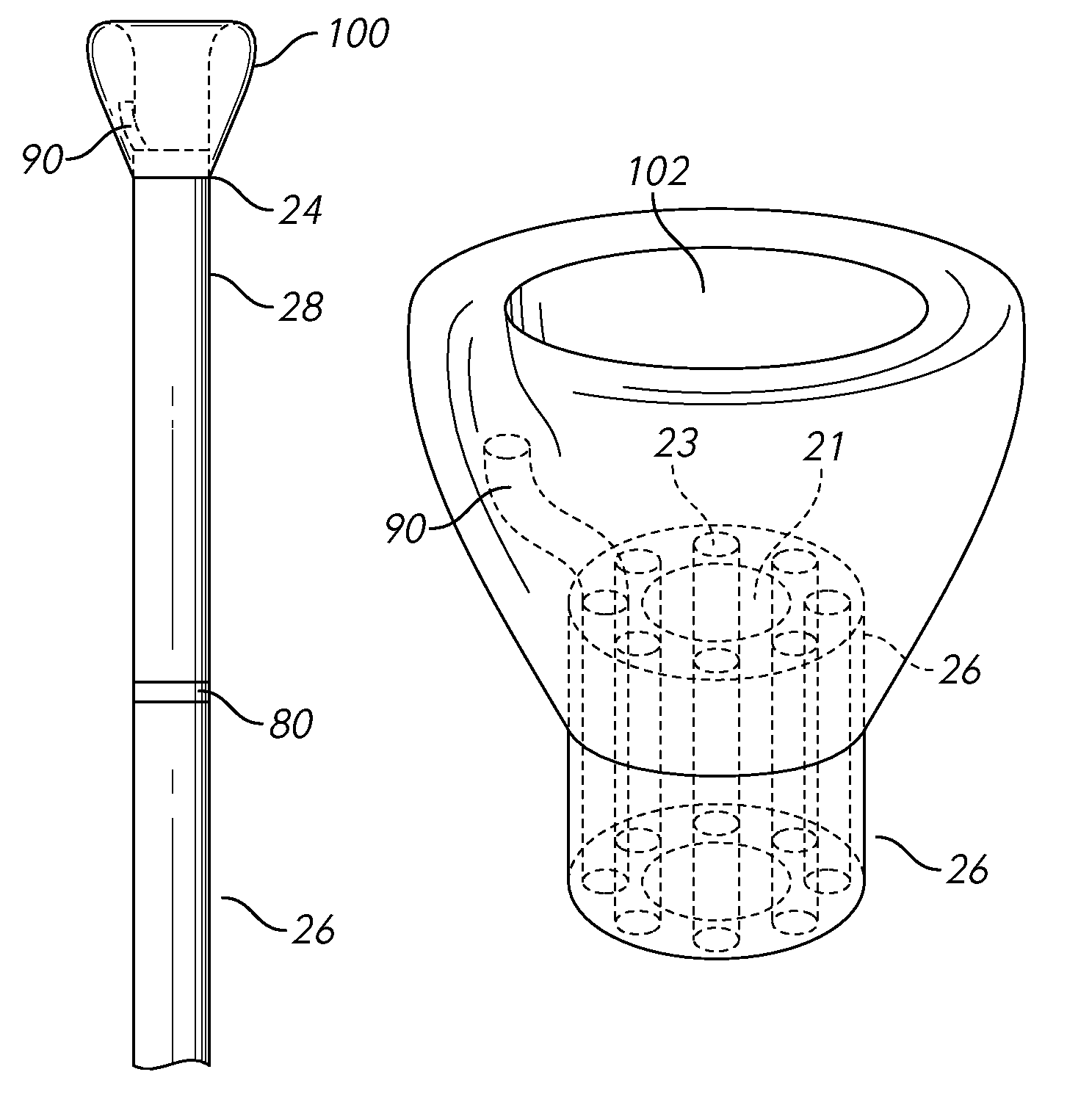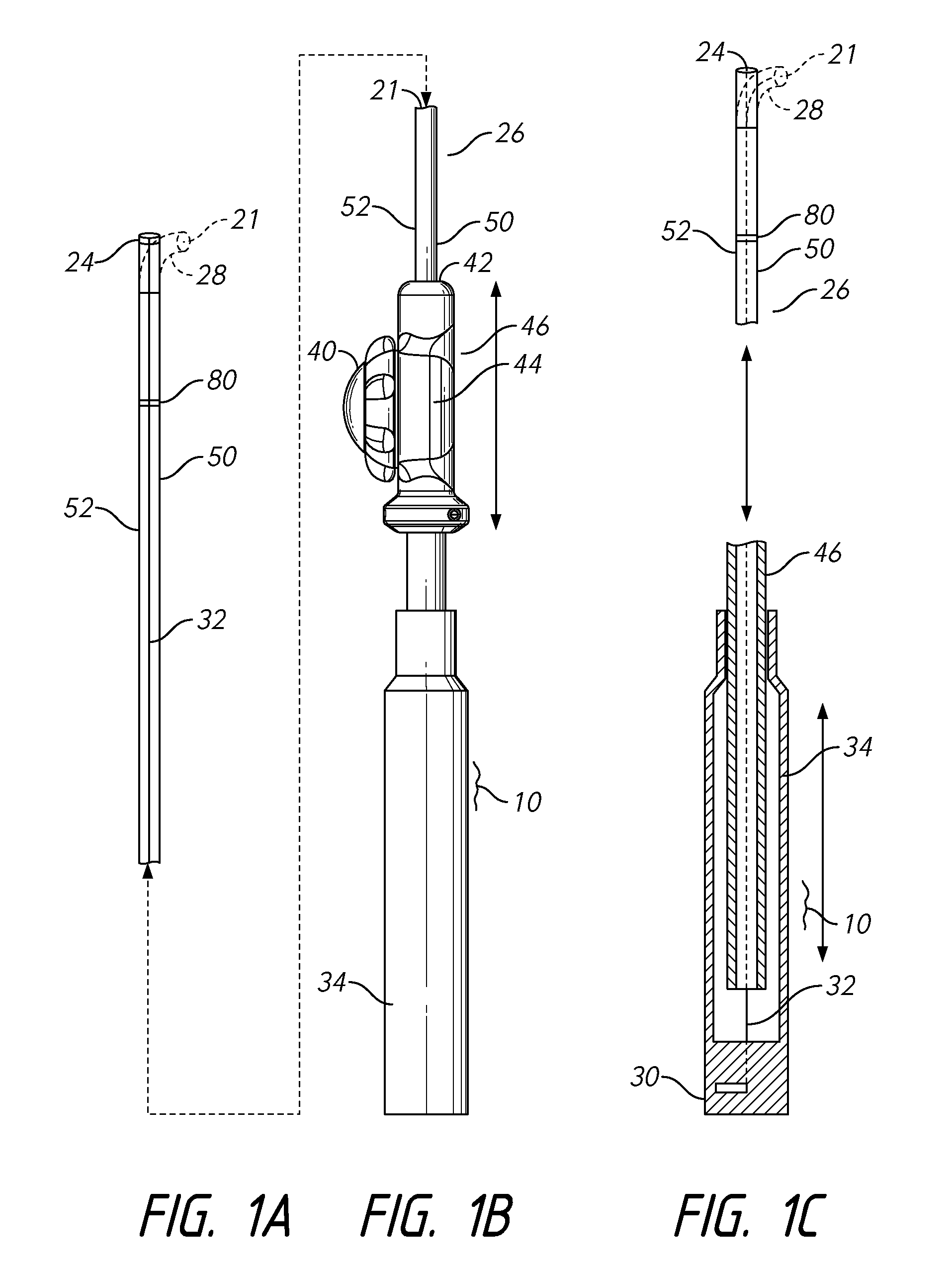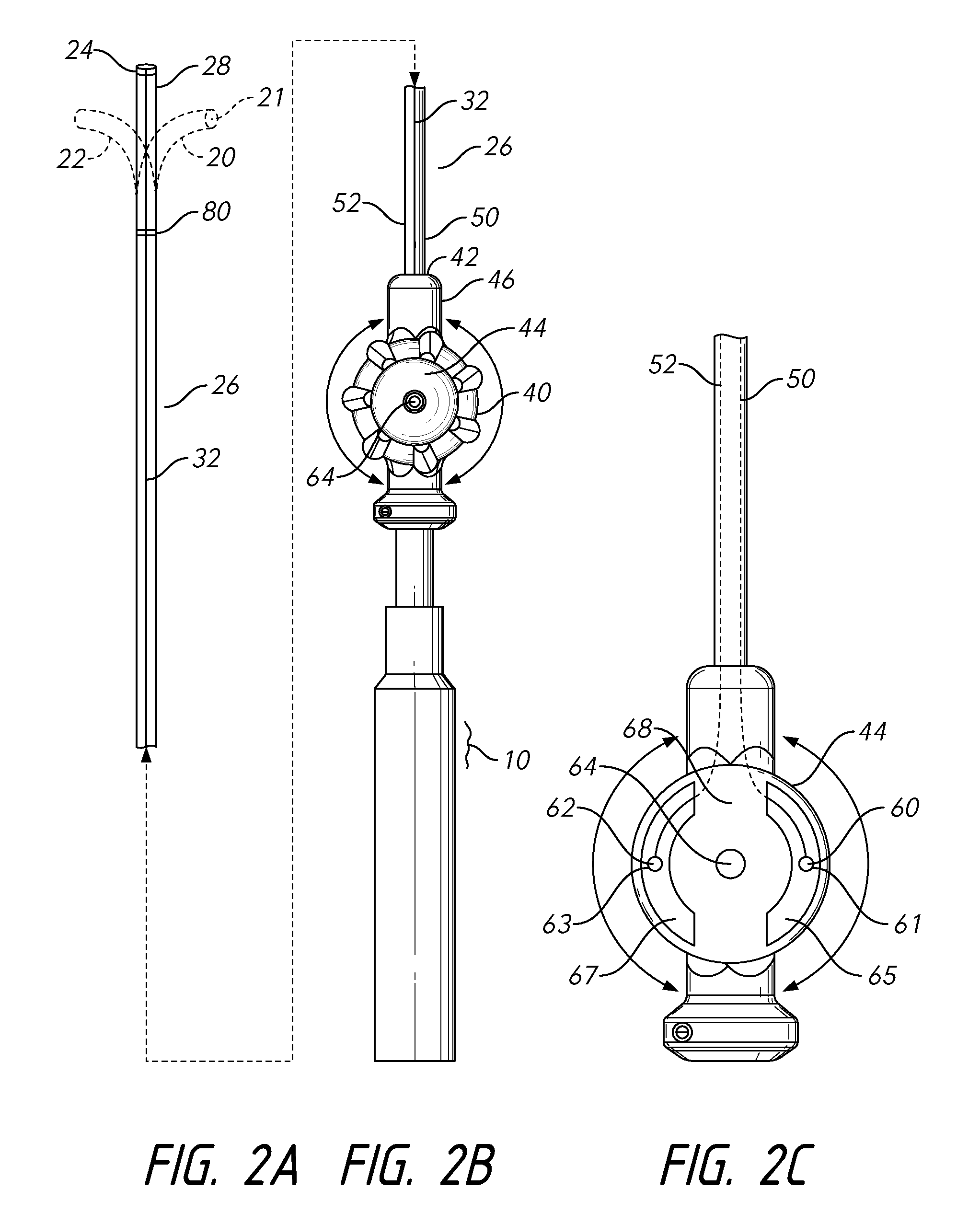Tri-directional articulating catheter
a catheter and articulation technology, applied in catheters, other medical devices, medical devices, etc., can solve the problems of compromising the safety of the central lumen, and achieve the effect of resisting the central working lumen, facilitating the distal tip articulation, and avoiding the risk of central lumen compression
- Summary
- Abstract
- Description
- Claims
- Application Information
AI Technical Summary
Benefits of technology
Problems solved by technology
Method used
Image
Examples
Embodiment Construction
One embodiment of the invention is a catheter having an elongate catheter body configured so that the distal tip can articulate in two opposite directions along a plane of articulation without compression of the central working lumen. The articulation is accomplished by steering two wires that are placed within opposed peripheral lumens that themselves are disposed on an exterior surface of a central working lumen. The positioning of the opposed peripheral lumens creates the plane of articulation. The placement of the steering wires in peripheral lumens exterior to the central working lumen provides resistance to compression at the distal tip along the length of a bend that occurs when selective tension is applied to one wire.
The material that constitutes the distal tip is composed of combinations of materials in order to provide maximum flexibility at the very tip and increasing strength (and so reduced flexibility and reduced tendency for compression) in the material as it moves p...
PUM
 Login to View More
Login to View More Abstract
Description
Claims
Application Information
 Login to View More
Login to View More - R&D
- Intellectual Property
- Life Sciences
- Materials
- Tech Scout
- Unparalleled Data Quality
- Higher Quality Content
- 60% Fewer Hallucinations
Browse by: Latest US Patents, China's latest patents, Technical Efficacy Thesaurus, Application Domain, Technology Topic, Popular Technical Reports.
© 2025 PatSnap. All rights reserved.Legal|Privacy policy|Modern Slavery Act Transparency Statement|Sitemap|About US| Contact US: help@patsnap.com



